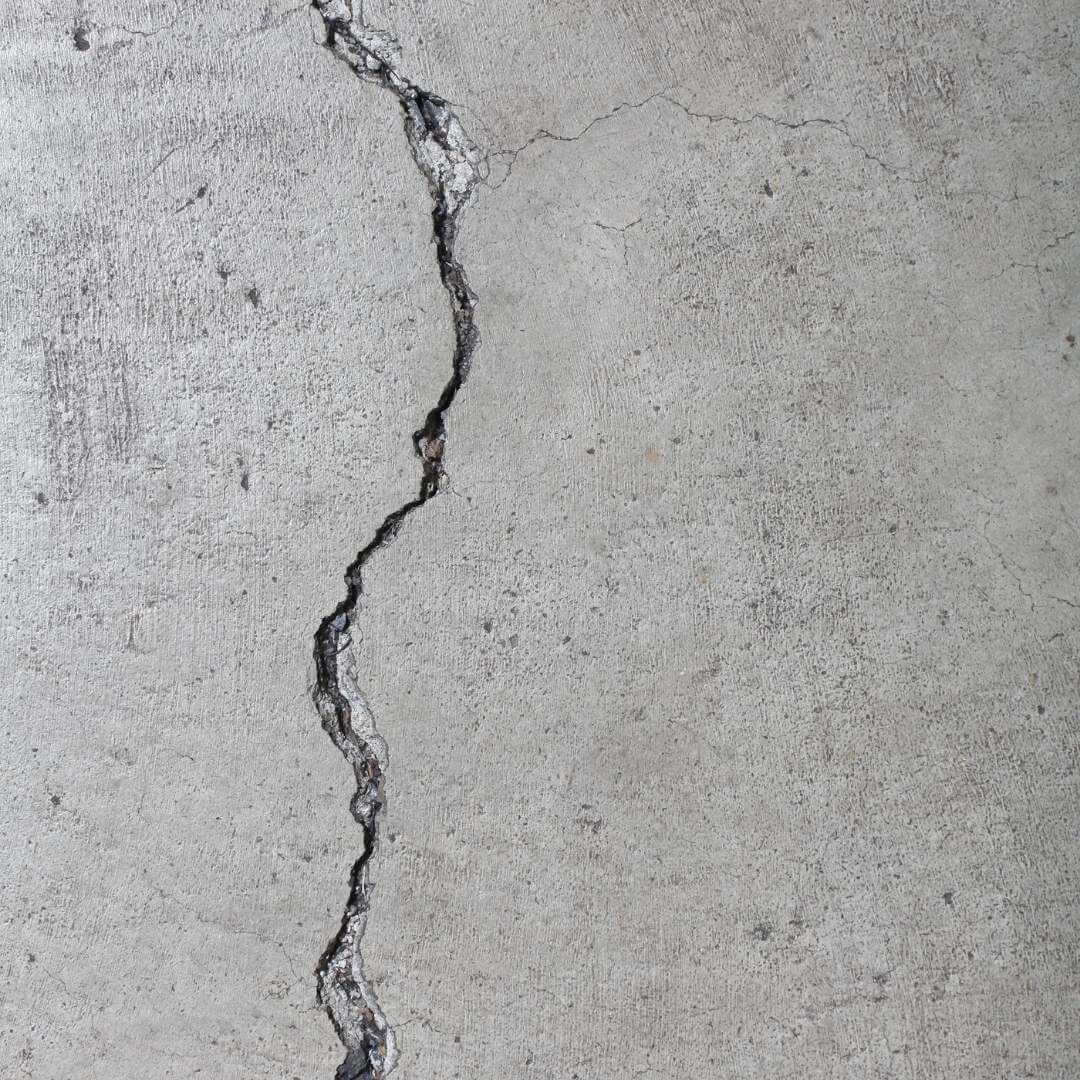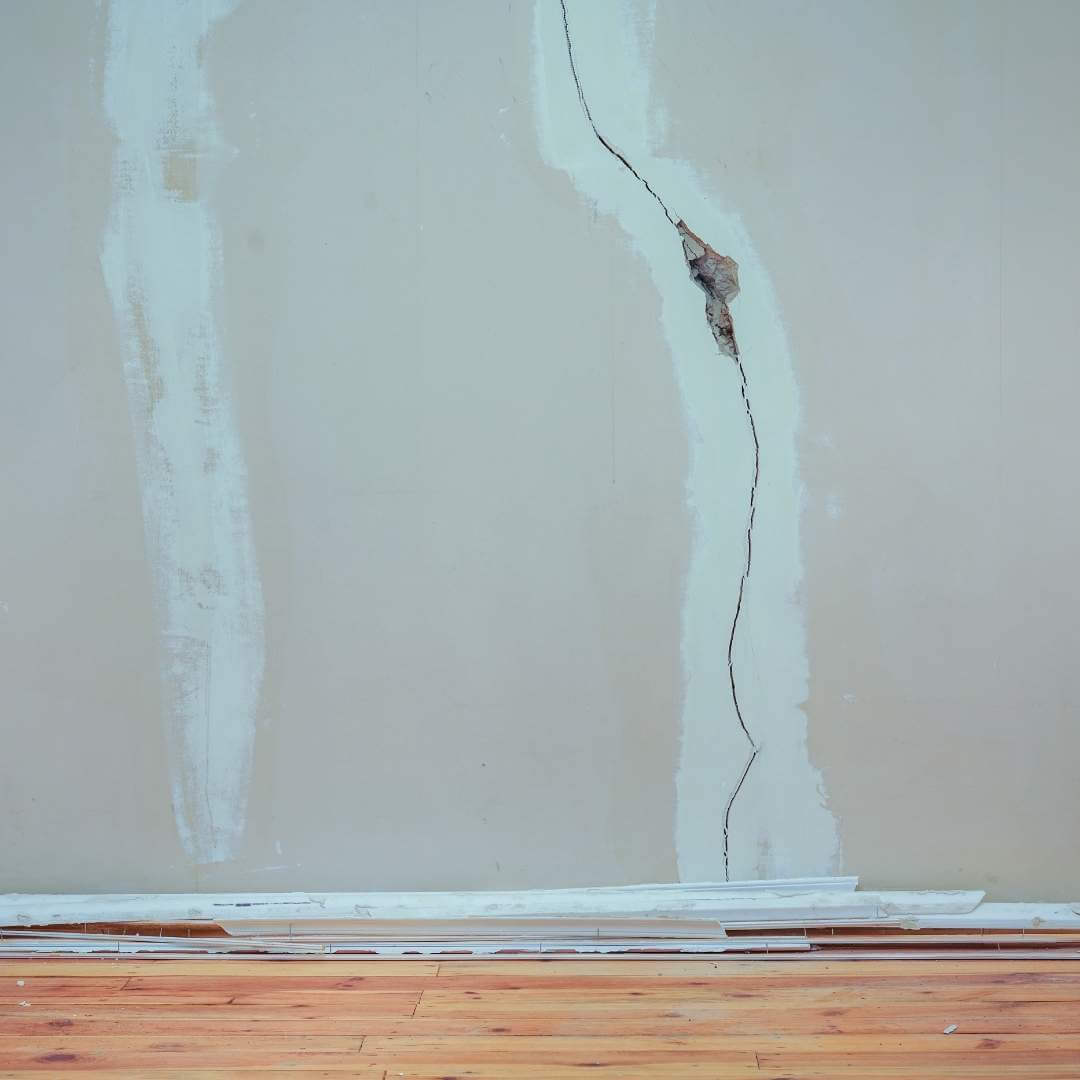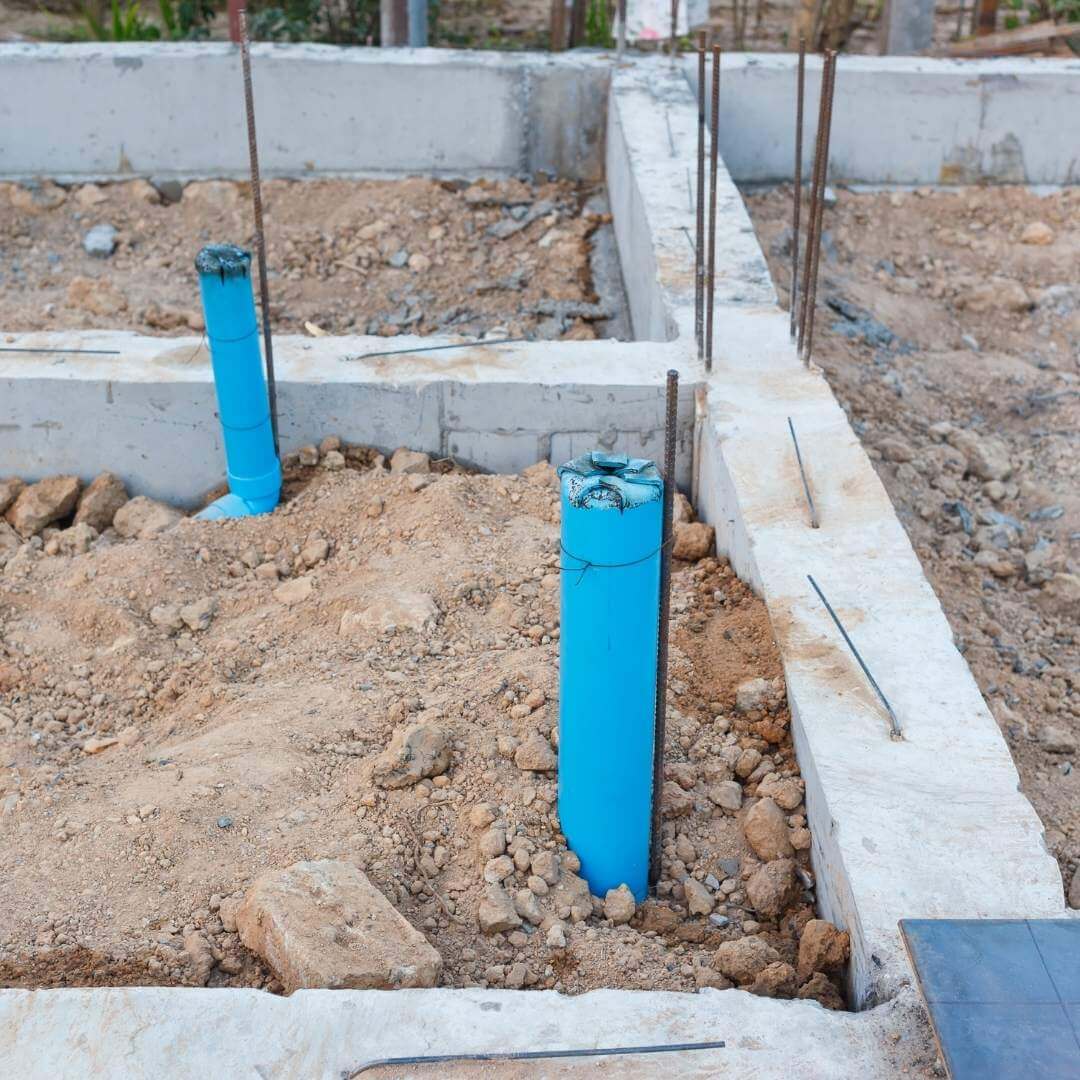Finding a crack on the wall is always a reason to panic. If you notice vertical foundation cracks, you might think everything is over and you need to move out!
Fortunately, not all cracks are dangerous. This is why it’s essential to differentiate various types of cracks. Knowing what needs urgent repairs and what can wait for a while can make a huge difference to your wallet.
If you’ve noticed vertical foundation cracks on your wall – don’t fret! We’ve got you covered. Here’s everything you need to know about cracks and how to fix them.
What Is a Vertical Crack in Foundation Wall?

Vertical cracks in foundation wall as, as their name suggests, cracks that span in the direction of the gravitational force. They are a common sight in many homes and in many parts of your property.
Most of the time, they occur inside the basement, but they aren’t limited to this area alone.
These cracks can be as thin as a hairline, but they can be of various sizes.
Vertical cracks usually appear in the middle of your wall. If you use professional services such as concrete retaining wall in Melbourne, you may not experience such issues. Occasionally, you’ll find more than one crack on the same wall, but this is a rare occurrence.
How Serious Are Vertical Foundation Cracks?

Once homeowners notice them, they usually wonder are vertical foundation cracks bad. Most of the time, you can sleep soundly knowing that your property will be safe. Vertical foundation cracks are rarely structural and dangerous.
However, this doesn’t mean that vertical cracks are harmless. They can allow water to go through walls, which is why they shouldn’t be left unattended.
Not just that, but if they are wider than 1/8 inch, or if there’s many cracks on a single area, they are an indicator of some serious problem. They might even be a sign that there’s some structural issue going on.
As such, we would always advise you to contact a professional that’ll know the severity of the damage.
What Causes Vertical Foundation Cracks?

Most of the time, vertical foundation cracks can be found on new properties. This is because they might appear once all the materials dry and settle in. Also, once the soil settles, this adds pressure against the walls, which might result in cracking.
This isn’t the only cause of cracks. Here are some of the most common reasons why you might have vertical cracks in your basement:
Soil That Wasn’t Compacted
Most construction company compact the soil before the construction. This is to help evenly distribute the ground around the structure and to make sure the foundation stands still.
Occasionally, though, this isn’t done properly. When this happens, the heavy structure of the house can sink into the soil.
While not as dramatic as this might sound, this can still cause harm to the walls and construction. Vertical foundation cracks are some of the mildest things that can occur when this happens.
Soil Rich in Clay
Most soils are rich in clay. According to the soil triangle composed by the United States Department of Agriculture, most soils contain at least some percent of clay. However, a soil wouldn’t be considered a clay soil per se unless it contains more than 40% of clay.
Even the smallest amounts of clay in the ground can lead to soil expansion. This type of soil is prone to swelling once it collects moisture. When it dries out, it shrinks once again.
This type of movement can lead to structural problems, including various forms of cracks.
Slope
If your property is built on a slope, this too can lead to many issues, such as vertical foundation cracks.
No matter the soil type, the ground can creep on a slope. Whether you live on top or bottom of a hill, the soil from the top will find a way down the slope. This is usually a slow process; one you might not even notice.
Any form of soil creep can lead to foundation cracks. This includes both vertical and horizontal ones.
Nearby Excavations
Not all causes are obvious. Sometimes, the cause might be something that isn’t directly connected to your property or soil around it, but it can still lead to damage – even to vertical cracks in concrete walls!
Is there some heavy construction work nearby? Possibly one that includes heavy excavation? Are the cracks you’ve noticed recent? If they are, chances are the excavation is what’s causing them.
Nearby excavations can cause soil movement, which can lead to vertical foundation cracks. Don’t worry – the damage is rarely as significant as you see it on the TV. Construction work likely won’t cause your entire home to fall apart. However, some foundation damage is likely.
Read Also: How Deep Are Pipes Under a Slab House
Changes in Weather
Weather changes usually include periods of heavy rain followed by drier seasons. If you live in areas with a changeable climate, you know what we’re talking about.
Unfortunately, such weather can cause foundation damage to your walls.
A perfect example of this is house built during a dry season. Once it rains, the soil will move, especially if it isn’t compact. This can lead to cracks early on in the construction work.
Not just that, but heavy periods of rain can lead to water damage. This is why it’s important to always waterproof your basement, no matter the costs.
Natural Disasters
This one is fairly obvious. Natural disasters can be dangerous for everyone and everything, not just your property.
Floods, fires, heavy storms, and earthquakes can lead to property damage. This includes foundation cracks, as well as many other structural problems.
Poor Drainage
Finally, poor drainage can also lead to vertical cracks. In fact, it is likely the most benign yet the most annoying cause of foundation problems.
For example, if you have too little soil next to your property, this can allow water to get into the concrete. Opposite of that, if there is too much soil, the water won’t be able to drain properly.
Not just that, but you need to be mindful of what you put around the house foundation. Some good options include:
- Gravel
- Drainage rocks
- Shrubs
Be careful when dealing with plants. You shouldn’t put plants with strong, large roots too close to the foundation, as roots can damage your property in more ways than one. Also, heavy foliage can lead to poor water drainage.
No matter what causes it, improper drainage leads to hydrostatic pressure. This can lead to walls bowing inwards. Over time, they might crack.
This is why it’s important to build a proper drainage system.
Read Also: How to Thaw Frozen Pipes Underground
How Do You Fix a Vertical Crack in a Foundation?
Now that you know what’s causing vertical foundation cracks, you’re probably wondering what you can do about them.
While these cracks are not as dangerous as some other ones, you should still repair them as soon as possible. These cracks can expand over time, and the final repairs will end up being more extensive – and pricier.
Luckily, there are a few DIY methods you can try, as long as the cracks aren’t too big. Still, we would advise contacting a professional to inspect the situation. You don’t want to risk potential structural damage going unnoticed.
Here’s what you can do about these cracks:
Caulking
Caulking is probably the most common method of sealing smaller vertical cracks. Many people caulk their walls annually or before paint jobs as a part of regular home maintenance.
This method can help seal minor cracks that would otherwise allow air and water to enter your basement. By filling them in, you can prevent moisture and mold. In fact, properly sealed walls are a huge part of energy-efficient home design, as they can help you save energy on heating or cooling.
Caulking is a process you can complete on your own. However, keep in mind to ensure the walls are clean before adding caulk. Otherwise, the caulk might bond to the dirt instead of concrete, which will make the seal less efficient.
Also, caulking cannot be done on larger holes as the material used for caulk isn’t as durable as cement or other materials used in construction.
Filling the Crack with Epoxy
Next to caulking, you might want to attempt to seal the cracks with epoxy.
Epoxy is a strong adhesive that can be poured into most holes. Also, it is among the few adhesive materials that won’t lose strength over time.
If you opt for this method, make sure to choose the right type of epoxy. Not all epoxies can be used for all materials.
Also, epoxy might be stronger when used to seal vertical cracks on wooden walls instead of concrete ones. Not just that, but it might take a while to dry, so it’s important to keep this in mind before use.
Filling the Crack with Polyurethane
Polyurethanes are some of the most common sealant materials. They are a bit more flexible than epoxy, they dry quicker, and they can withhold a certain amount of expansion. This means they can keep the crack sealed for a longer while.
Also, polyurethane can be used on more materials than epoxy, as it has better sealing properties – although it might not be as strong.
Of course, even polyurethane might crack if you don’t resolve the cause of the initial damage.
Inverted V-Groove
Inverted V-groove is mostly used to repair cracks in the concrete wall. However, this is something a professional must make and this can rarely be considered a DIY job.
A professional contractor will chisel out an inverted V-groove, Then, by filling it with hydraulic cement, they’ll seal the hole.
This can be a good solution for some homes. For others, however, it can create a mess. The new cement will rarely bond with the old one, and if this happens, the repair won’t last for long.
External Repairs
The best method might be conducting the repairs from the outside of the basement. Whether that be adding a better drainage system in combination with the sump pump or complex excavation processes, this is the most durable solution.
Unfortunately, this type of construction work can increase the vertical foundation crack repair cost. However, once you complete it, you likely won’t have to worry about cracks for a while.
This might be the best method for larger cracks, or if you fear structural damage.
Read Next: Common Problems With Slab Homes
Final Word
Most homes will have a vertical foundation crack someplace. This type of damage is pretty common, and it can mean many things – but it will rarely indicate a true danger.
Still, you shouldn’t leave them as is as they can expand, becoming a more complicated matter. The smartest choice would be to contact a professional who will suggest the best possible solution for your situation.
As long as the cracks are on the smaller side, you might also want to attempt some DIY method. Just make sure to pick the right materials and techniques.

Michael Davis is a heating & plumbing expert who currently works as independent contractor in SC. He also writes for Plumbertip.
For almost 10 years he worked on various plumbing tasks across South Carolina.


